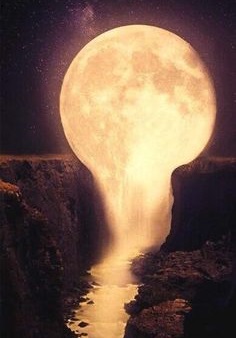
full moon pours
a million nights —
into the river
|
Author Notes
Haiku is a short Japanese poem that uses imagistic language to convey a moment in nature linked to the human experience. It originated in the thirteenth century and was mastered a century later by Matsuo Basho. The most important thing about a haiku is that it captures and conveys a sensory image of a single moment in time, and that image resonates on a deeper level, leaving the reader feeling enlightened and making an insightful connection between the top lines and the last one (satori). These poems use a dash to pause before the last line..
the last line (satori) an insightful twist to ponder. Sometimes the satori is in the first line. The two parts are compared in a way that prompts the reader to make an insightful connection. Haiku alludes to a season of the year. The haiku is written from an observer's point of view. In Japan, haiku is written in 17 syllables and three lines ( 5/7/5) but in English is 17 syllables OR LESS because English syllables are longer than Japanese sounds (on). Avoid capitalization and punctuation, except for personal nouns. Avoid poetic devices, haiku is written from an 'observer' point of view so we don't know what plants or animals think or feel. === click here to read Haiku Society of America, HAIKU EXAMPLES === click here to read Haiku Society of America HAIKU RULES === click here to read why is 5/7/5 OR LESS rule === Modern Haiku
Thank you very much for taking the time to read and review my poem.
Gypsy
"Poetry heals the wounds inflicted by reason." - Novalis
|
|




